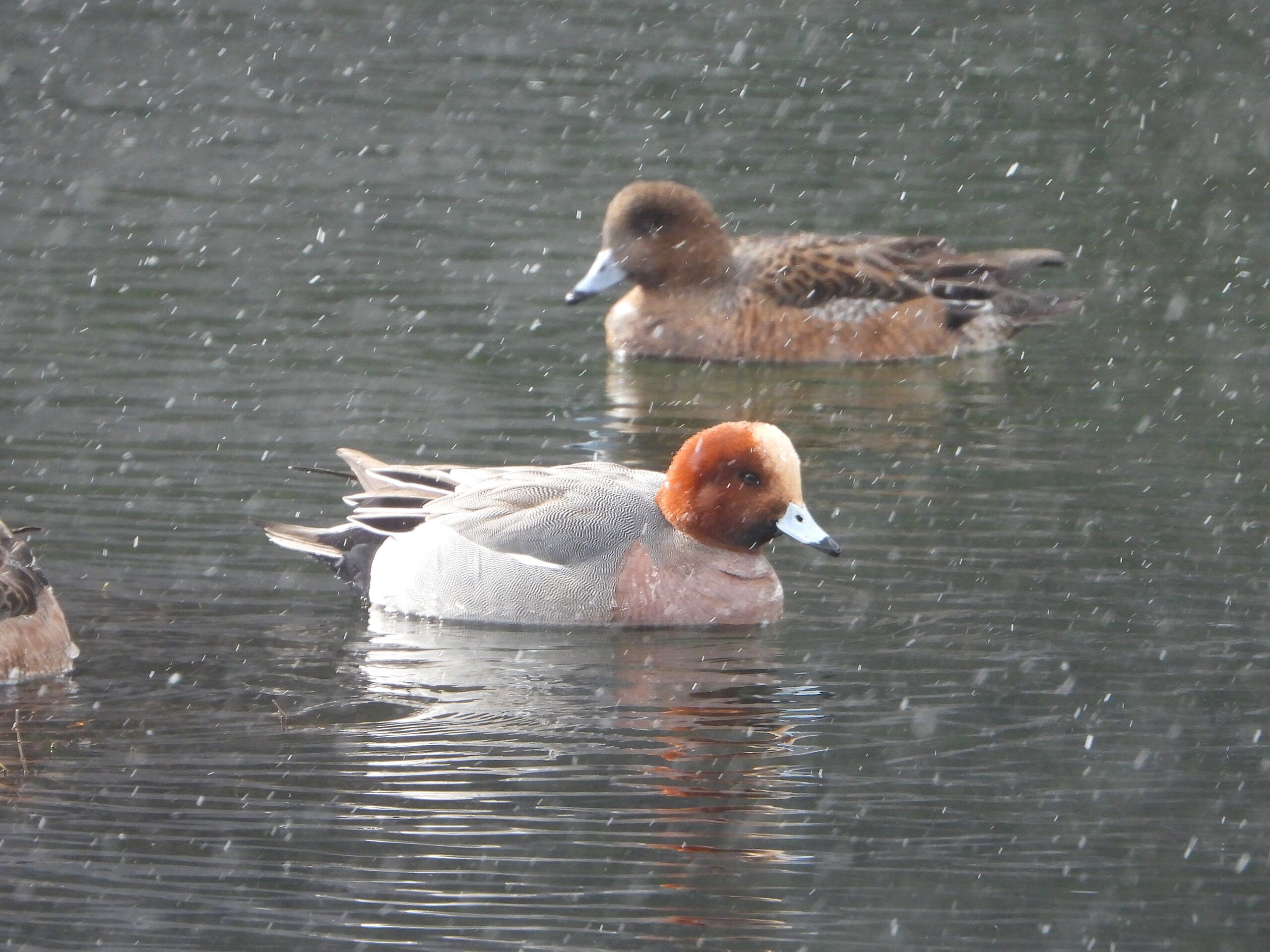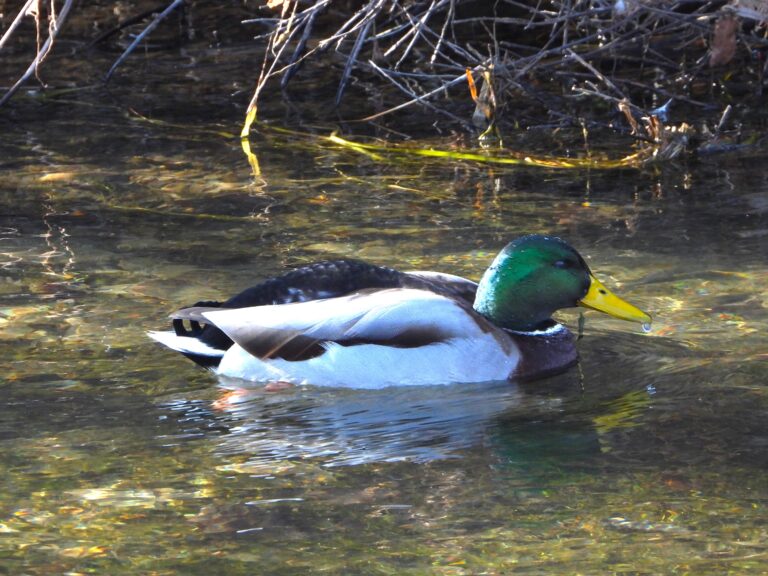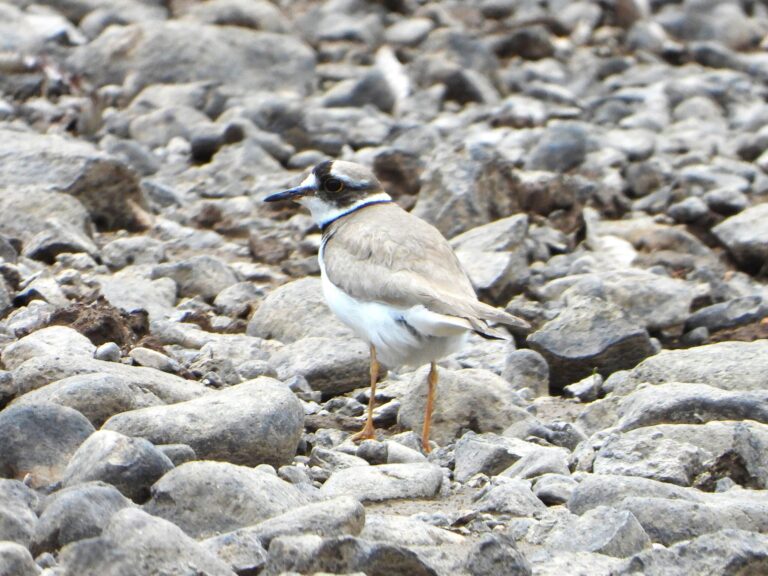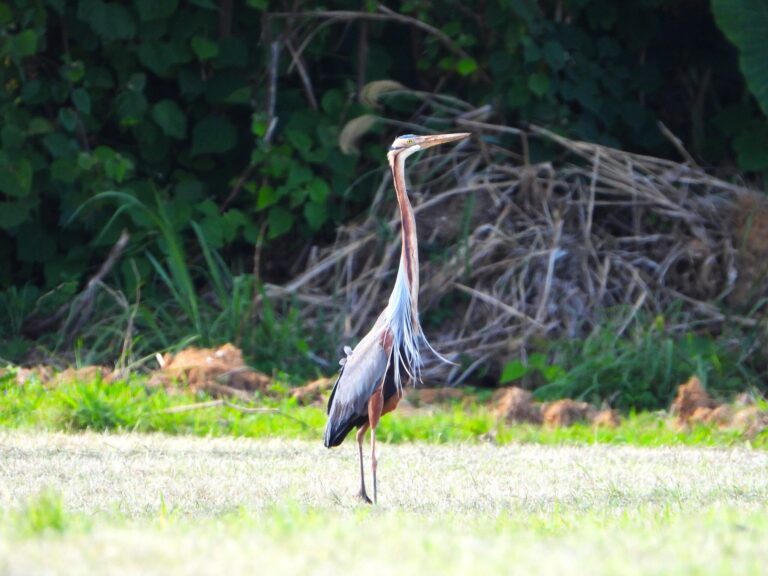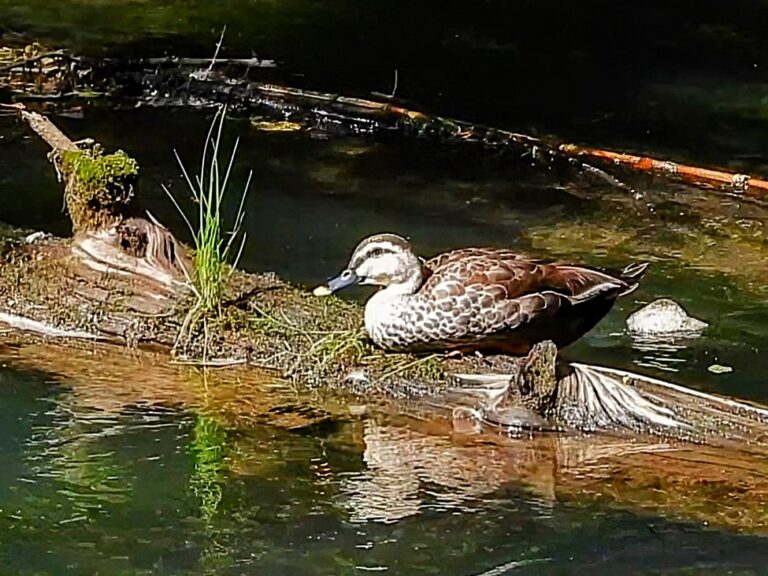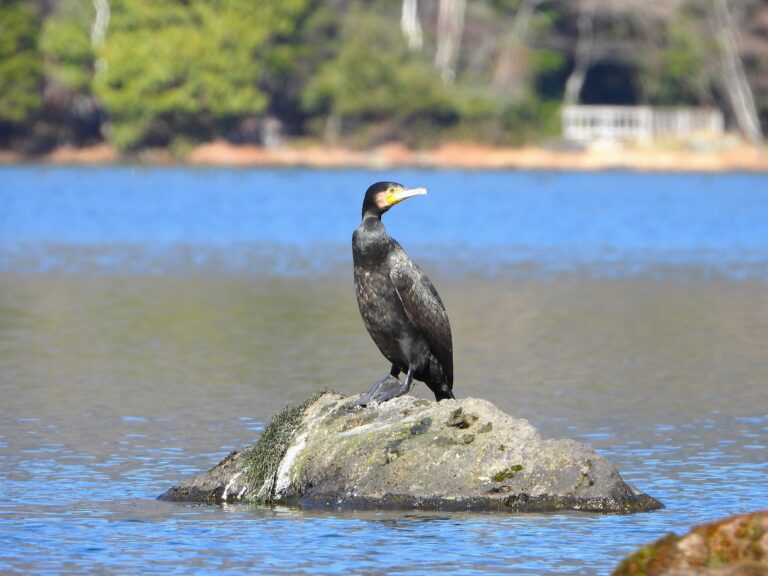Eurasian Wigeon (Mareca penelope) – Wildlife of Japan
Introduction
The Eurasian Wigeon is one of Japan’s most abundant winter ducks, migrating from northern Eurasia and gathering on lakes, rivers, and sheltered coastal waters. Their soft, musical “piu!” calls echo across calm ponds and bays on crisp winter days, signaling the arrival of the season’s waterfowl.
Appearance
The male shows a rich chestnut head with a creamy-yellow forehead, gray body, pinkish chest, and a black rear end. A white shoulder patch flashes brightly in flight, and the bill is gray with a black tip.
Females are warm brown and finely mottled, sometimes showing a reddish tone on the head. Both sexes have a green speculum on the wing.
Body length ranges 48–50 cm.
Habitat & Distribution
The Eurasian Wigeon breeds across the wetlands of northern Eurasia and migrates southward in winter to Europe, North Africa, the Middle East, and Asia. In Japan, it is a widespread and common winter visitor, with records from late September to April in regions such as Hiroshima Prefecture. It inhabits freshwater lakes, slow rivers, estuaries, and urban ponds, forming large flocks on open water or along grassy shores. The global population is large and stable, and the species is classified as Least Concern by the IUCN.
Where to See in Japan
Eurasian Wigeons are widespread and easy to observe in winter:
- Tokyo Port Wild Bird Park and other urban ponds often host large feeding flocks.
- Kyoto’s Kamo River is famous for birds grazing directly on riverside lawns.
- Hiroshima and Miyajima areas see flocks foraging along rivers and sheltered bays, occasionally feeding on washed-up seaweed (Ulva).
Almost any calm pond or river across Honshu, Shikoku, and Kyushu can host this species in winter.
Behavior
Outside the breeding season, Eurasian Wigeons are highly social, forming dense groups that rest on water by day and graze on nearby banks by evening.
They feed mainly by dabbling and grazing, and are also known to steal plant fragments from coots and diving ducks—a form of kleptoparasitism observed in several studies.
Males whistle a clear “piu!”, while females utter lower, gruff calls.
Diet
Their diet consists mostly of grasses, aquatic plants, and algae.
Inland flocks graze on short grasses around ponds and rivers, while coastal groups have been documented feeding on green seaweeds such as Ulva.
Occasional “food-stealing” behavior provides additional plant material during winter scarcity.
Reproduction (Outside Japan)
Breeding occurs in northern Eurasia’s wetlands during summer. Nests are built on the ground, hidden among vegetation.
The female alone incubates a clutch of 7–10 eggs, and ducklings fledge about 6 weeks after hatching.
Conservation
The Eurasian Wigeon remains globally secure (Least Concern), with millions of individuals across its range.
In Japan, it is one of the most numerous wintering ducks, and continued protection of wetland feeding and resting areas is essential for maintaining this population.
Author’s Impression
The Eurasian Wigeon has such a distinctive look—especially the male with his creamy forehead and chestnut head—that whenever I spot one, I can’t help but exclaim, “Oh, a Wigeon!” Watching dozens grazing side by side on a riverside lawn captures the calm rhythm of Japan’s winter wetlands.

